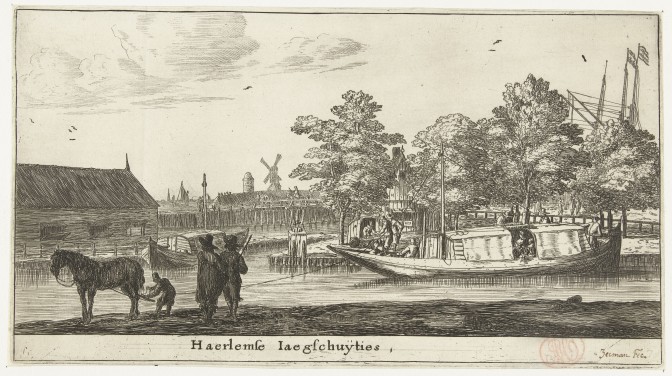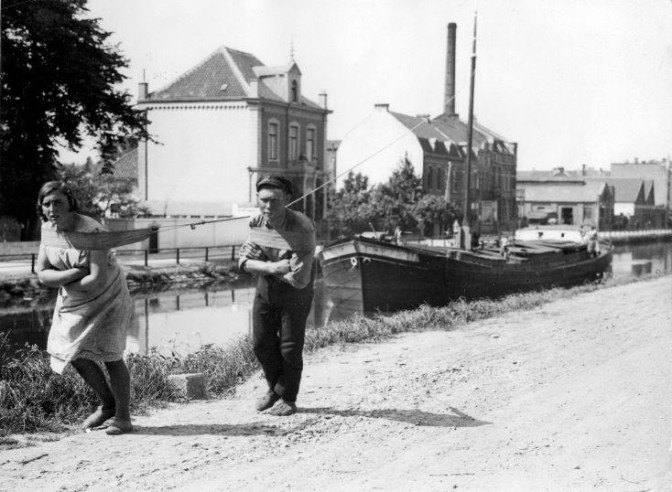Trekschuit literally means “pull barge” and is a low-bottomed ship that was dragged along canals and rivers. In the waterlogged country that is The Netherlands, trekschuiten were one of the main forms of transportation for people and goods over longer distances, as roads were often so muddy that they were useless for most of the year.

Trekschuit to Haarlem, 1652-1654. Image credits: Rijksmuseum (public domain)
Most trekschuiten were powered by horses, who walked along the rivers and canals on specially created paths. In some cases, the people who operated the barge pulled them manually.
On popular routes, trekschuiten traveled according to a fixed schedule. This was a very efficient way to travel. Richer people could sit in the small cabin, while seats on deck were cheaper.
Trekschuiten remained popular until the introduction of the railways in the second half of the 19th century. Today, they are mostly gone except for tourists, although some of the paths next to the canals still exist.

Human-drawn Trekschuit, 1931. Image credits: Spaarnestad Photo

